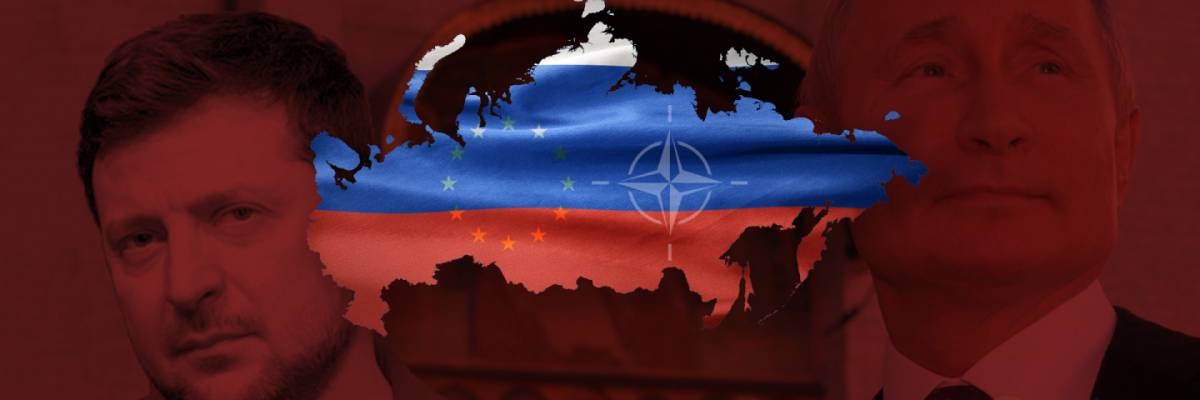3301 Views
At a Strategic Crossroads: Europe Reassesses Security in the Shadow of Russia
The war in Ukraine, now in its fourth year in 2025, has profoundly reshaped Europe’s security paradigms — especially regarding nuclear deterrence against Russia. Moscow’s strategic use of nuclear threats has compelled Europe to reassess its heavy reliance on the United States and to explore alternative security options.
Russia’s invasion of Ukraine in February 2022 marked a turning point where nuclear signaling became a central element of Moscow’s hybrid warfare. President Putin raised Russia’s nuclear forces to high alert early in the conflict, and subsequent rhetoric — including threats tied to Western arms deliveries — was designed to sow anxiety and disrupt NATO unity. By 2024, Russia revised its nuclear doctrine, lowering thresholds for use in response to conventional attacks deemed existential threats. This “escalate to de-escalate” approach shifted political calculations: European leaders hesitated to supply advanced weapons to Ukraine, fearing escalation. Analysts argue these threats reduced NATO’s willingness for direct involvement.
Traditionally, Europe’s nuclear security has relied on extended deterrence from the United States, including tactical weapons deployed in countries such as Germany and Turkey. Yet Donald Trump’s return to the presidency has fueled doubts. His previous administration criticized NATO spending and signaled conditional support, consistent with Washington’s pivot to the Indo-Pacific and China. Recent polls highlight experts’ concerns that wavering U.S. commitments could create a “deterrence gap,” leaving Europe vulnerable to Russian aggression. Even if a full U.S. withdrawal is unlikely, the uncertainty has spurred a strategic shift: Europe must consider alternatives to avoid paralysis.
In response, Europe is exploring multiple paths. France and the United Kingdom — the continent’s only nuclear powers — maintain a combined arsenal of about 515 warheads (France: 290, mostly submarine-based; UK: 225 via Trident systems). Modernization is underway, including France’s ASMP-A missile upgrade and Britain’s new Dreadnought-class submarines. Notably, strategic coordination has advanced significantly: the July 2025 “Northwood Declaration” committed Paris and London to align nuclear postures against “severe threats” to Europe, including potential joint patrols and intelligence sharing, while retaining operational independence. Broader discussions envision a “European nuclear umbrella,” where France and Britain could extend guarantees to EU allies, likely through NATO’s Nuclear Planning Group or EU frameworks. Yet challenges remain: proliferation risks, massive costs (estimated €100–200 billion for a robust arsenal), and political divergences, given France’s forces lie outside NATO. While feasible in theory, a credible European alternative to U.S. deterrence would require deep integration — hampered by sovereignty concerns and diverging national perspectives.
Beyond nuclear options, the EU is reinforcing multi-layered deterrence through major investments. In March 2025, it announced €500 billion in defense spending over the next decade, prioritizing integrated air and missile defense (e.g., expanding the 21-member European Sky Shield initiative), cyber resilience against Russian hackers targeting energy grids, and AI for autonomous drones and predictive threat analysis. The European Defence Fund allocated €8 billion for 2021–2027, funding joint projects in autonomous systems and quantum computing. Defense industries are being revitalized under the European Defence Industrial Strategy, with a goal of sourcing 50% of purchases within the EU by 2030 to reduce reliance on the U.S. These initiatives, as noted by European Parliament briefs, are designed to integrate with NATO, though budget gaps and industrial fragmentation persist.
Bilateral efforts — such as the UK-France treaty — showcase Europe’s determination to rebuild its military power and send a signal of unity to Moscow. NATO’s 2023 Vilnius summit and EU initiatives like PESCO (Permanent Structured Cooperation) further facilitate joint capabilities. Yet experts caution: while these steps bolster deterrence, U.S. involvement remains essential to prevent fractures within the EU.
American policymakers and think tanks (e.g., Heritage, CSIS) urge Europe to accelerate nuclear modernization and consider tactical deployments for flexible responses. In Trump’s second term, proposals include upgrading dual-capable aircraft like the F-35 and positioning non-strategic systems along NATO’s eastern flank to deter escalation with Russia. These align with calls for “burden-sharing,” pushing Europe to complement the U.S. umbrella with indigenous capabilities — though critics warn of proliferation risks.
Meanwhile, the Ukraine war has reignited debate over Europe’s nuclear deterrence. Options include strengthening French and British arsenals, deeper coordination, or a shared nuclear umbrella. In parallel, conventional forces and emerging technologies are being advanced to provide layered deterrence.
Europe’s greatest challenge, however, lies in the lack of unified structures, divergent national interests, and slow decision-making. Without greater cohesion, Europe risks both vulnerability to Russia and continued dependence on the U.S. — contradicting its long-term pursuit of strategic autonomy. Only through unity, rapid decision-making, and coordinated budgets can Europe secure genuine security. Otherwise, hesitation and disunity may heighten vulnerability and ultimately sideline Europe in future global power games.
*Translated by Ashraf Hemmati from the original Persian article written by Amin Mahdavi

Comment
Post a comment for this article